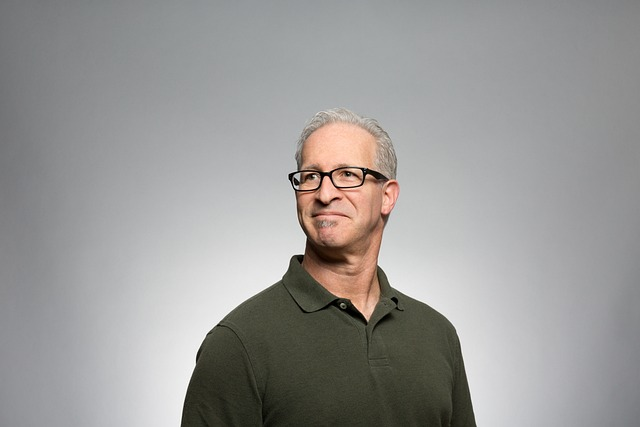Testosterone is a hormone found in both males and females. It plays an essential role in developing male characteristics and maintaining muscle and bone health, red blood cells, sperm, and sexual libido (sex drive). Testosterone production may decline due to lifestyle factors like stress, a medical condition, or infection.
You can be prescribed testosterone replacement therapy (TRT) if you have clinically low testosterone levels. This guide aims to answer common questions like “What is TRT”, “Who is suitable for TRT”, and “How to get a testosterone therapy prescription”.

What is Testosterone Replacement Therapy (TRT)?
TRT is exactly what it says on the tin. It’s a type of treatment that replaces natural hormone levels in those who are deficient. Testosterone replacement therapy is an excellent treatment option if you are male and have associated low testosterone symptoms.
Who is Fit for Testosterone Replacement Therapy?
Testosterone, or hormone replacement therapy, is suitable for men clinically diagnosed with testosterone deficiency syndrome. In medical terms, this is called male hypogonadism. You can be born with male hypogonadism, or it can develop at any age.
Healthy testosterone levels for males aged 18 to 99 are between 193 and 824 ng/dL. You may be considered for testosterone treatment if your levels are 300 ng/dL or below.
You should get a testosterone blood test to determine your current levels of testosterone. You can do this through the NHS, a private clinic, or by using an at-home testosterone test kit.
Signs of Low Testosterone Levels
Low testosterone levels can cause a variety of health problems which can impact your daily life, relationships, physical health and mental health. Testosterone is responsible for more than sperm count and libido, meaning testosterone deficiency can create many problems for men.
Testosterone will decrease slowly from around the age of 30. This decline is around 1 to 2% a year. This usually does not cause issues unless your testosterone levels are already borderline.
If you notice any of the following signs, you may have low testosterone levels:
● Feeling tired all the time
● Erectile dysfunction– a condition where you struggle to get and maintain an erection
● Fewer spontaneous erections
● Feeling irritable more than usual
● A decrease in mood, including depression and low mood
● Lower muscle mass
● Receding hairline
● Increase in body fat, usually with no other explanation
● Loss of body hair
● A reduction in sex drive, meaning you feel in the mood for sex less than before with no other cause
● Osteoporosis, a condition which causes weak bones due to low bone density
● Brain fog, meaning you have problems with memory or concentration
Any of the symptoms above could point to low testosterone levels, especially if you are experiencing more than one. You should seek medical advice if you have any of these symptoms, as you may require hormone replacement therapy.

Benefits of Testosterone Replacement Therapy
Testosterone replacement therapy has lots of benefits for people diagnosed with low testosterone. It can improve sexual function in males, such as erectile dysfunction, sex drive, and better-quality erections. Testosterone replacement therapy can also improve sexual function in females, improving vaginal dryness, sex drive, and the ability to orgasm.
Other notable benefits of TRT include:
● Improved bone density
● Reduced risk of osteoporosis
● Higher energy levels
● Improved mood
● Better memory and concentration
● Regrowth of hair loss
● Better muscle mass
● Reduced body fat
These benefits can all be gained from increasing your testosterone levels back to normal range.
Types of Testosterone Replacement Therapy (TRT)
To get a prescription for testosterone therapy, you must first be diagnosed with low testosterone. There are several forms of TRT, such as:
● Gels. These absorb testosterone straight into your bloodstream through the skin. Testosterone gel can be applied to the upper arms once or twice daily. Certain gels are absorbed through the nose.
● Mouth patch. Testosterone mouth patches or tablets stick to your gums and release testosterone into the oral tissues. This testosterone treatment is commonly used in people who have difficulty swallowing.
● Pills. Oral testosterone is less commonly prescribed due to an increased risk of side effects. This treatment involves taking a testosterone tablet once a day to improve testosterone levels.
● Injections. TRT can be injected straight into the muscle, which gets released into the bloodstream. Injections are typically given every 1 to 4 weeks, depending on your testosterone levels.
● Implants. A testosterone implant is given under the skin and will slowly release TRT into your bloodstream, meaning you don’t need to take daily treatment.
● Skin patch. A testosterone skin patch should be applied once daily on your upper arm or body and can boost testosterone levels in your bloodstream.
You can also boost testosterone levels with natural testosterone boosters or by making changes to your lifestyle.
Testosterone Replacement Therapy Precautions
Before starting testosterone replacement therapy, you must speak to a healthcare professional. They will check that you have a testosterone deficiency before beginning treatment, as well as your symptoms. A blood test can also be used to diagnose any other hormonal imbalances that may be causing low testosterone.
A doctor will also check your medical history to ensure that hormone therapy is a safe and suitable treatment option. If you have certain medical conditions or take certain medications, TRT may not be the right choice.
If you have any of the following conditions, your doctor may suggest that you do not use testosterone therapy:
● Benign prostatic hyperplasia. An enlarged prostate that can worsen with TRT. This causes lower urinary tract symptoms such as difficulty urinating and urinating more often.
● Prostate cancer. Testosterone can increase the risk of prostate cancer growth and accelerate the development of pre-existing cancerous cells. Your doctor should test your prostate before using TRT.
● Obstructive sleep apnoea. A sleep disorder that can be deadly and stops you from breathing in your sleep.
● Congestive heart failure. People with heart conditions should avoid TRT, as it can interfere with current medication.
You should also avoid TRT if you have severe urinary tract symptoms or have had a recent heart attack or stroke.
If you want to start a family soon, TRT may not be suitable.
Risks of Testosterone Therapy
Although rare, you should be aware of the risks associated with testosterone replacement therapy. These risks can be managed by taking legal testosterone therapy and having a general health check with your doctor before starting any treatment.
The side effects of TRT include:
● Skin rash
● Liver problems
● An enlargement in breast tissue
● Hypertension (high blood pressure)
● Itching
● Water retention
● Male pattern baldness
● Irritation at the site of injection, if you take testosterone injections
● Bladder irritability
● Decreased sperm reduction
● Shrinkage of the testicles
● A high red blood cell count, which increases the risk of blood clots
● A change in mood, such as aggression or angry behaviours
You will be monitored during testosterone therapy treatment, but if you notice any of these symptoms, speak to your doctor immediately.
Testosterone Replacement vs. Performance-Enhancing Steroids
Testosterone replacement therapy is not the same as performance-enhancing steroids, although they can both boost testosterone. Performance-enhancing steroids, such as anabolic steroids, may contain testosterone or chemicals that act in the same way, but they are not testosterone treatments.
The steroids athletes or bodybuilders use are also illegal and could cause severe and unwanted side effects. Testosterone in steroids is at a much higher dose than TRT and combined with other chemicals and substances.
We do not recommend taking any kind of illegal and unregulated steroid if you have low testosterone levels.
How Much Does TRT Cost?
If you get testosterone replacement therapy on the NHS, you will either:
● Not have to pay anything for your prescriptions, if you usually get medicines for free.
● Have to pay the current standard prescription charge set by the NHS.
It can take longer to get TRT through the NHS as the process can take longer than going straight to a private clinic that specialises in testosterone.
To get TRT on the NHS, you must first make an appointment with your GP to discuss your symptoms. Unless your symptoms are severe, you will have to wait for the next available appointment. If your symptoms are severe, you should ask for an emergency appointment.
You may need to ask for a testosterone blood test if your GP does not initially reach this conclusion.
Once you have a diagnosis of low testosterone, your doctor will refer you to a specialist (urologist) who can discuss TRT with you. Referrals can sometimes take several months, as can initial appointments.
Once you have seen a specialist, you can get TRT if the treatment is safe and suitable.
The cost can vary if you get testosterone therapy privately through a clinic or online pharmacy. This depends on how long you need treatment for, and which type you choose. Some pharmacies offer a monthly TRT subscription, which is just over £100.
This means you can be looking at an average cost of around £1250 a year, unless you have health insurance.
Does Insurance Cover TRT?
Most health insurance companies will cover testosterone replacement therapy with a medical diagnosis. You can check whether TRT is covered in the terms and conditions or by speaking to an insurance representative. Other costs may still be involved, such as TRT blood tests or delivery.
Is Testosterone Replacement Therapy Safe?
Testosterone replacement therapy is safe, although it can cause some side effects like any other medication. If you have low testosterone symptoms that are impacting your daily life, the benefits often outweigh the risk of side effects.
Living with low testosterone can seriously affect your health, and your doctor will ensure TRT is safe for you before prescribing it.
How Long Should I Stay on Testosterone Replacement Therapy?
This depends on why you need testosterone therapy in the first place.
If another medical problem causes low testosterone, you may only need TRT until the condition is treated or cured. For instance, problems with your pituitary gland (a gland located at the base of the brain) may affect your testosterone levels. ‘
If you have been diagnosed with a pituitary gland problem, you may take TRT until the issue is solved. After this, your body should be able to produce and regulate testosterone at a healthy level.
If the condition is not curable or there is another cause, TRT may be used as a long-term treatment. It is safe to take TRT as long as you need it.
What Does TRT Do to Your Body?
Testosterone therapy gives your body the testosterone it needs to function optimally. You may notice some physical changes when you start using TRT, such as increased muscle mass and bone density or decreased body weight.
While we've ensured that everything you read on the Health Centre is medically reviewed and approved, information presented here is not intended to be a substitute for professional medical advice, diagnosis, or treatment. It should never be relied upon for specific medical advice. If you have any questions or concerns, please talk to your doctor.




